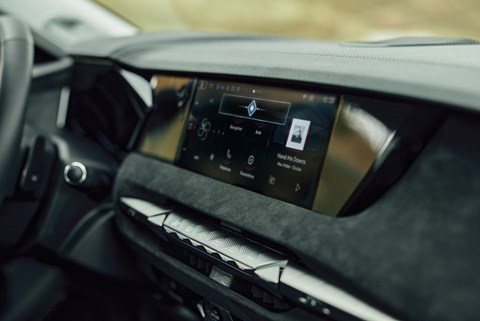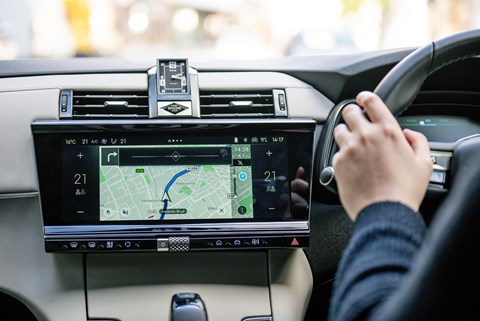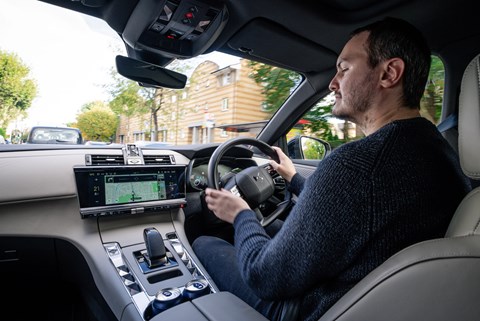► ChatGPT enters the automotive world
► DS cars can feature the generative AI tech
► Now standard after trial in late 2023
DS Automobiles is one of the first car makers to introduce ChatGPT into its infotainment system, after a what it considers a ‘successful trial’ in 2023. The generative AI service will be incorporated into its ‘Iris’ voice assistant, as part of its connected infotainment system.
The brand says its inclusion is ‘a revolution in the automotive world,’ and boasts that it’s the first time the tech has been used in a car in Europe. Since the trial launched in the last few months of 2023, more car makers including Mercedes, Volkswagen and most recently fellow Stellantis stablemate Peugeot has said its latest infotainment systems will include ChatGPT integration.
‘Our mission at DS is to provide our customers with a unique onboard experience. As pioneers in the integration of ChatGPT into the automotive world, we are making a generative artificial intelligence that is fluid, intuitive and immersive accessible, transforming every trip into a unique journey,’ says CEO of DS Automobiles, Olivier François.
We’ve been given a chance to test the technology for ourselves in the heart of London – keep reading for everything we’ve learned.
What is ChatGPT?
ChatGPT is an AI-powered language model that’s been hitting the headlines for the last year or so. The tool, which has been developed by OpenAI, operates in a conversational way and responds to questions or prompts by users. OpenAI says that the model is capable of ‘answering follow-up questions, admitting its mistakes, challenging incorrect premises and rejecting inappropriate requests.’ The tool learns from the interactions it makes with people, too.
Its use is being explored in all corners of the world. Some see it as a simple chat companion, while others are exploring its use as a productivity tool.
The use of AI in general has hit the headlines as it integrates (or intrudes, some may argue) into daily life, with debates and actions arising to curb its influence. ChatGPT is seemingly one of the AI tools at the centre of these debates, as it does have limitations. For example, while it has access to vast wells of knowledge and data, it can sometimes fabricate responses or lack common sense to add context; prompts that you provide it need to be specific to get the desired result and it naturally doesn’t have much in the way of emotional intelligence.
That said, there are still many that see the AI tool as a benefit designed to enhance or augment itself into a system that already exists – that’s exactly what DS is doing with its Iris in-car voice assistant. DS sees its in-car integration as one of the bespoke experiences and differences it has over others in the premium car market.
How is it included in DS cars?
After the brand trialled the technology for 20,000 DS owners, the technology will be included as standard from March 2024. Given it works in the most up-to-date version of DS’ infotainment, the technology will also likely be included via a future, imminent over-the-air update.

The technology can be installed in all of DS’ models currently on sale that have the DS Connected Navigation system enabled, and up to certain points for models already on the road:
- DS 3: Since its facelift at the beginning of 2023
- DS 4: Since the latest generation launched at the end of 2021
- DS 7: Since its facelift at the end of 2022
- DS 9: Since its light update in May 2023
The assistant needs a permanent cellular connection (which will already be active in your car, given the requirement to have the Connected Navigation system), and the ChatGPT technology installed in the DS cars for the pilot phase has a knowledge base with a cut-off point of September 2021.
That means, if you were to ask it anything more recent, it would likely tell you that it doesn’t know, or even make up a response that isn’t true. ‘The plan will be to review everything after the pilot phase, and then we decide how we want to develop the technology from that point,’ says Stellantis’ UK fleet and business manager, Richard Watson. ‘But we need and want the insight first as to its usage and how everyone interacts with it before we make any final decisions with it.’
What does ChatGPT do in a DS?
The aim for the tech is to expand the capabilities of the Iris voice assistant system. ‘Iris is the system that’s already in the car,’ says Watson, ‘but the speech recognition will move forward now to become more of a travel companion – taking it to the next level.
‘To now, assistants have very much been in-car focused: “make a phone call”, “change the radio station”, “set a navigation point.” It’s about expanding it now so it can do so much more. Some people think that might mean adding a level of complexity to our customers, but we feel it’s quite the opposite because it’s so intuitive.’

The idea is that, as well as all of those usual commands voice assistants are usually capable of, you can ask it things about what you see or give it instructions. The examples we were shown ahead of testing the technology included a driver visiting a new place and asking about what it’s famous for and information about its history. Another example was asking the service to tell a short story to distract bored kids in the back of the car.
How does ChatGPT in a DS work?
It works just like any real voice assistant does. You can ‘wake up’ the assistant by saying ‘OK Iris’, or simply pressing the voice command button on the steering wheel.

We tried several commands and requests as we tested the technology in a DS 7 in East London. Landmarks like the Olympic Park in Stratford, the Traffic Light Tree near Blackwall and Reliance Square in Shoreditch gave us opportunities to ask about London’s history. After taking a wrong turn, we even asked it to tell a story about a man getting lost in London – which it did in a very corny, happily-ever-after sort of way.
A couple of curious, if loose requests (“tell me about the Limehouse Link tunnel”) produced the navigation results rather than information, so you will need to get your wording right.
But other than that, the system still worked like a traditional voice assistant, allowing you to make changes to your route or give someone a call while you’re driving.
Does the ChatGPT assistant work?
Our experiences were relatively smooth. We did have to correct it once or twice as it had supplied obviously wrong information, and it takes a little time to get your wording right to get the answer you’re after. But, mostly, the technology fundamentally works – and DS is keen to remind us that it will forever be learning from its inputs, meaning it’ll refine itself over time.
But does its inclusion into a car completely revolutionise in-car voice assistants? No. As Watson says, if you treat it like a travel companion that you can ask it questions or get it to briefly distract the kids with games and it’s a nice little bonus. But that’s all it really feels like: a nice little bonus. And, for those who don’t really use voice assistants that much in the first place, we doubt it’ll hugely convince you to start using one more.